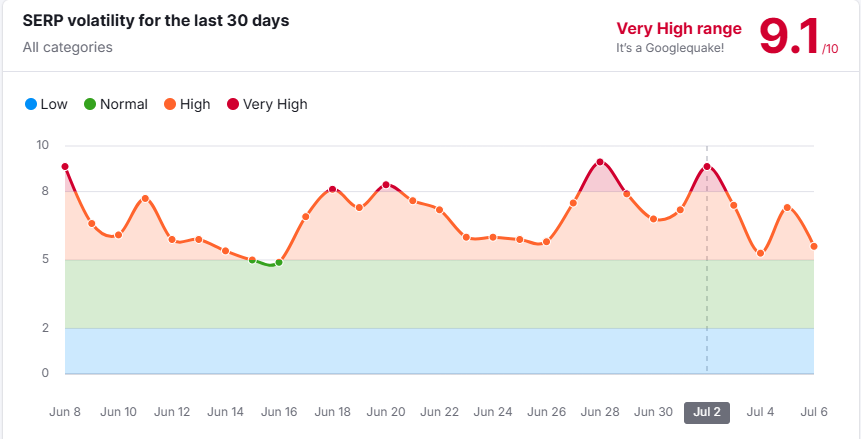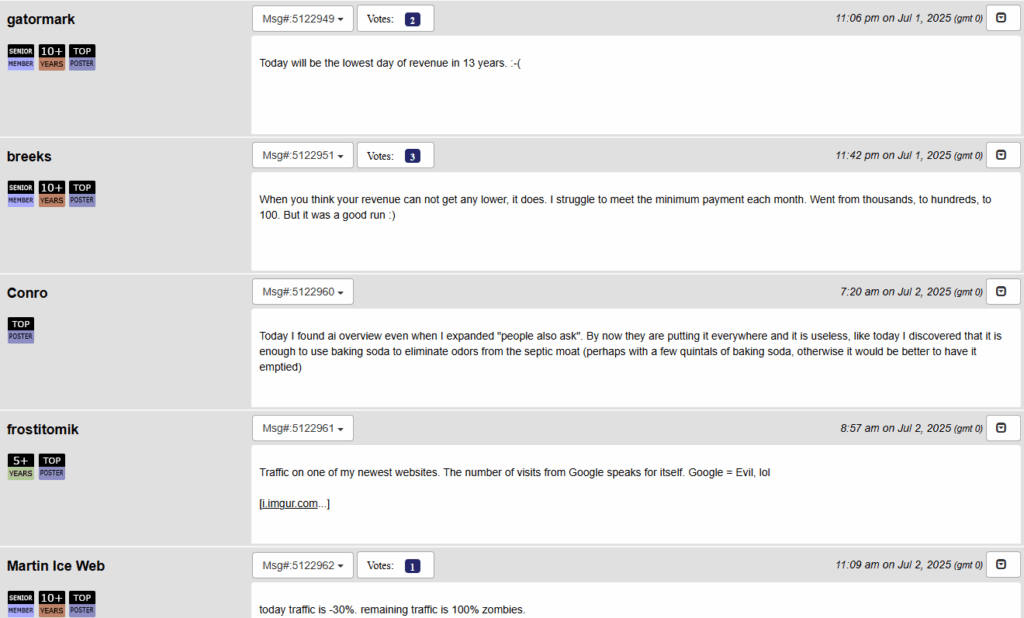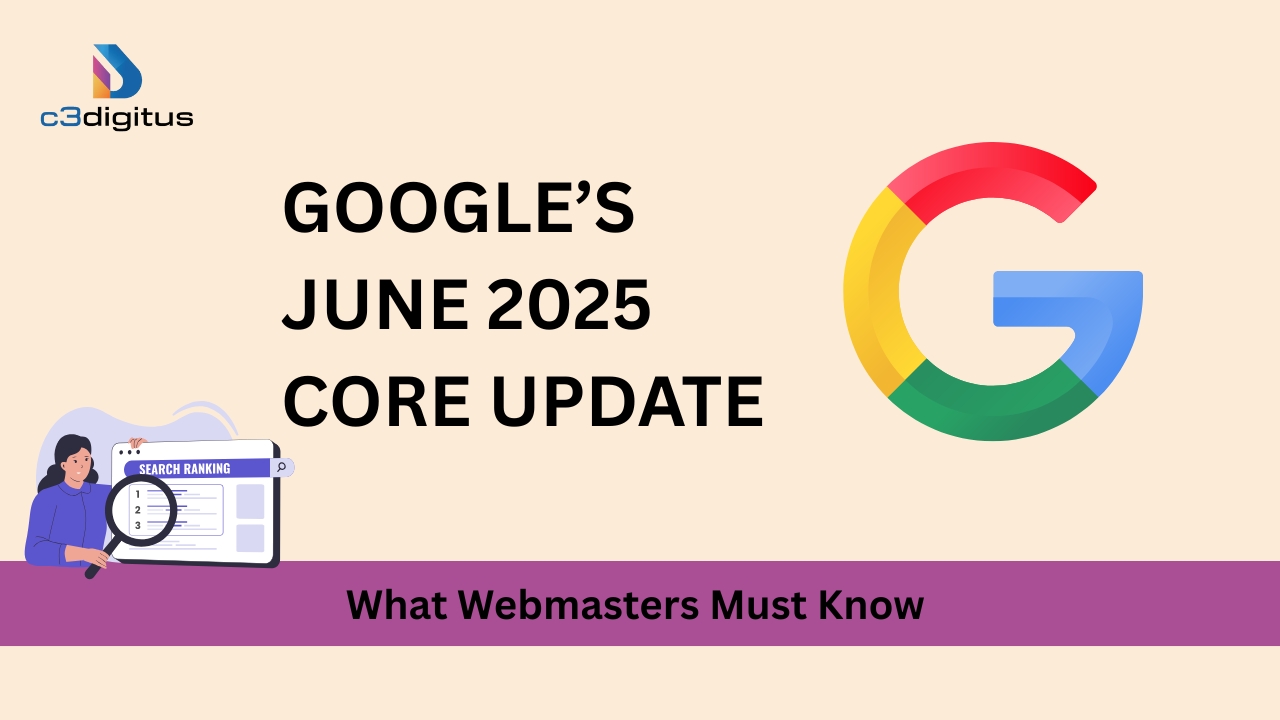Google’s June 2025 Core Update is now rolling out, bringing broad changes to the search algorithm. The update was announced on June 30, 2025, and may take up to three weeks to complete. As a broad core update, it affects search results globally and is not aimed at any specific niche or tactic, so rankings across all industries and topics can shift dramatically. SEO professionals are watching this closely due to the extended duration and the significant ranking volatility already observed.
Rollout Timeline and Key Details
The update began on June 30, 2025. A three-week rollout is longer than most past core updates, suggesting that this one might be particularly impactful. It follows the March 2025 Core Update, which ran for about two weeks.

Core updates bring broad and systemic changes to how Google assesses and ranks content. They are not penalties. Rather, they represent a recalibration of Google’s systems to reward the most helpful, high-quality content. No specific industry is targeted; all content is re-evaluated, and some sites may rise or fall in visibility based on the new criteria.
Early Volatility and Industry Movement
In early July, SEO tracking tools began detecting unusual ranking fluctuations. These tools picked up clear signs of algorithm turbulence, even though many SEOs initially reported minimal impact. By July 2, prominent analysts were reporting early “surges and drops” across thousands of sites, with some sites bouncing back after brief declines.
Interestingly, some ranking volatility occurred even before the official announcement, likely due to other updates. But once the core update began, noticeable shifts became more common. Rank tracking platforms showed visible spikes in turbulence. Some site owners observed extreme swings; one noted that rankings dropped on day one, recovered on day two, and dropped again on day three.
This kind of oscillation is typical during major core updates, which often cause temporary instability before rankings settle.

This kind of oscillation is typical during major core updates, which often cause temporary instability before rankings settle.
SEO Community Reactions
As with most core updates, the community response has been mixed, with some celebrating gains and others lamenting sudden losses.
One publisher shared that their traffic from Google Discover and search “died” after the update, stating that visibility had worsened dramatically. Another joked that their traffic graph was a “disaster” and sarcastically called Google “evil.” Several users reported their sites jumping in and out of rankings daily.
Not everyone is hurting, though. Some publishers are seeing traffic increases of 10–20% compared to the previous week. Others report that some pages gained traffic while others lost, suggesting a lack of clear pattern. Some SEO professionals even observed 40–50% improvements for client sites in the first few days of the update.

A common concern is whether this update favors large, authoritative sites. One webmaster said that in his niche, small websites had been “swept away” while larger publishers now dominated the results.
At this stage, many SEOs agree it’s too early to draw conclusions. The update is still rolling out, and more data will emerge in the coming weeks.
Google’s Official Advice
Google advises website owners not to panic. Core updates are not manual actions or penalties; a ranking drop doesn’t necessarily mean something is wrong. There is no “fix” other than improving your content quality.
Google encourages website owners to review their content against its helpful content guidelines, which stress user-first content, expertise, and originality. If you’ve been creating content that’s genuinely helpful to people, you’re on the right track.
Recovery from core updates often requires patience. Improvements might not be recognized until the next core update. Making impulsive SEO changes mid-rollout can do more harm than good.
Here’s what SEO professionals should focus on during the rollout:
- Document everything: Track keyword fluctuations and traffic changes. Note which pages are affected and when. This will help with post-update analysis.
- Keep producing quality content: Focus on delivering value, expertise, and relevance. Pages that meet user intent are more likely to rank well.
- Don’t over-correct: If rankings drop temporarily, don’t make drastic changes until the update is complete and the rankings stabilize.
- Benchmark competitors: If your site lost ground, look at what improved sites are doing better, whether in content depth, structure, UX, or authority.
The key message from Google remains: write for people, not for algorithms. Sites that consistently deliver real value and demonstrate E-E-A-T (Experience, Expertise, Authoritativeness, and Trustworthiness) are better positioned to benefit from future updates or recover from ranking downturns. Google’s evolving algorithms increasingly reward content that’s not only relevant, but also credible and trustworthy.
Takeaways and What’s Next
The June 2025 Core Update is significant, longer in duration, and potentially broader in impact than some previous updates. Many sites are already seeing volatility, but the final outcomes won’t be clear until the rollout concludes.
If your site took a hit, don’t assume the worst. Focus on improving content quality and aligning with Google’s guidance. If you gained, that’s a strong signal that your current content strategy is working, but don’t rest. Search competition never sleeps.
In the coming weeks, SEO professionals will analyze the patterns, winners, and losers in greater detail. Until then, stay focused on what matters most: creating helpful, trustworthy, user-centric content. That remains the foundation of successful search engine optimization, no matter how the algorithms evolve.
If all of this feels overwhelming, you’re not alone. Navigating Google’s core updates, algorithm shifts, and ranking volatility can be incredibly complex, especially when you’re also trying to run a business. That’s where c3digitus’ SEO Services can help. Our team of SEO specialists stays ahead of every update, continuously analyzing trends and adapting strategies to keep your site competitive. Whether you’ve seen a drop in rankings or just want to future-proof your digital presence, we can help you make sense of the chaos and turn challenges into growth opportunities. Let us handle the algorithms while you focus on your business.



